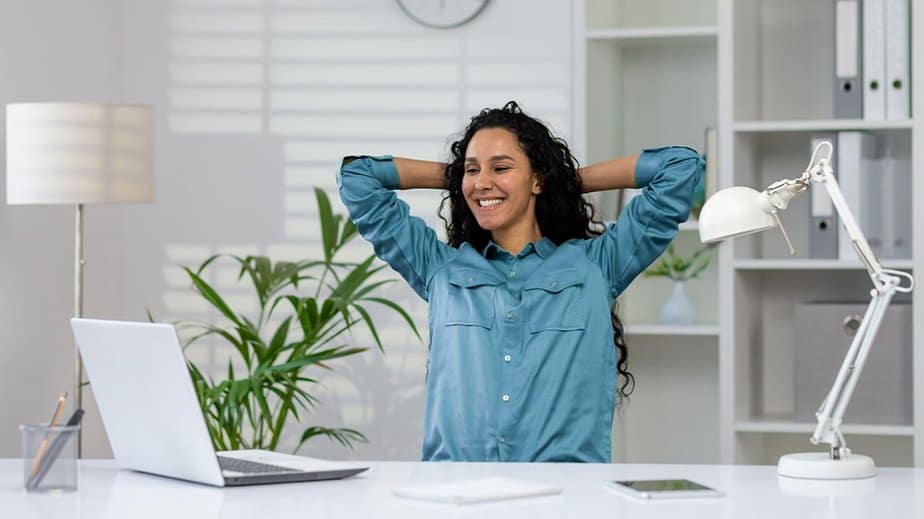Home should be a space where people can restore and recharge. However, it doesn’t always feel that way to everyone, and the reason often lies in the interior design.
Whether you are a content creator who feels uninspired at home or works, or are an interior designer who wants to create comfortable spaces for their clients, this article is just for you. Read further to discover how interior design contributes to human mental health and which decorations can help you instantly make a living and working space more inspiring and calming.
The Importance of Interior Design for Mental Health
Well-designed interiors can help people:
- Reduce stress, especially when calming pastel shades are used. Soft blues, greens, and neutral tones can help create a serene, relaxing environment;
- Feel more comfortable at home and, therefore, rest more profoundly. This can be achieved with the help of comfortable furnishings, cozy textiles, and ergonomic layouts;
- Make a space more accessible for people of all ages and abilities. Features like wider doorways, step-free access, and well-lit pathways help everyone feel more comfortable at home and are especially important for people with limited mobility;
- Promote creativity and improve self-esteem, for instance, when a person is free to decorate a space according to their tastes and preferences. Doing so allows people to express their personality, as well as enjoy the created environment more.
How Does Design Affect Mood?
Design, in all its forms, can influence mood through the choice of colors and form. When it comes to interior design, in particular, spacious and light homes can help people feel better and more relaxed, while dark and cluttered rooms can make them feel more stressed.
Does Decorating Help with Depression?
Decorating can help with depression if it’s done right and if the environment you create is supportive and inspiring. This can be achieved by personalized and meaningful decorations, such as posters of movies you like, items that reflect your hobbies, and elements in your favorite colors, for instance, in shades from a pastel color wheel. A Depositphotos blog article recommends choosing textures or patterns that complement a pastel color scheme, for example, a gentle floral pattern, a herringbone motif, or a refined lace texture.
Does Design Affect Human Behavior?
Yes, and it can do this both in a positive and negative way. For instance, people like to stay longer in well-designed spaces where they might feel more focused and creative. Poorly designed spaces, on the contrary, may negatively affect creativity and focus.

Interior Decorations and Elements That Are Good for Mental Health
Given the importance of interior design for mental health, you might consider redecorating your home to feel better. In this case, pay attention to the following details:
Green plants and natural elements
Plants in your home or office can help improve concentration and memory, as well as reduce stress. To maximize this effect, you can also add other natural elements to decorations, such as earthy textures like wood or stone, flower prints, and other organic patterns. Being around natural elements can help you feel calmer and more connected to the natural world, even without leaving your house.
Shapes
Shapes used in interior design can also affect mood. For instance, soft, rounded shapes like circles and curves help people feel more comfortable and relaxed. Sharp angles and straight lines, on the other hand, can help create a more dynamic and energizing atmosphere, but can also cause anxiety when used in spaces like bedrooms. You can also mix shapes to create visual interest and balance within a space.
Big windows and sunlight
Access to natural light can be very important. For instance, employees who have sunlight in their workspace noticeably outperform their colleagues. What’s more, artificial light can also worsen your sleep patterns. Therefore, look for ways to let more light into a room, or consider moving your workspace closer to a window if you work at home.
Storage spaces
If your home is cluttered, you might feel more stressed and anxious. At the same time, you might still need to store lots of things somewhere. In this case, adequate built-in storage spaces such as hidden closets and shelves help make the living area look less cluttered, leaving only essential and decorative elements on the surfaces. Such an area, in turn, seems more spacious and comfortable.
Balanced Decorations
With the help of balanced decorations, you can create a harmonious environment that is not only visually pleasing, but also good for your mental health.
Such decorations can take the forms of:
- Repeating patterns (for instance, on pillows);
- Mirrored arrangements, such as identical vases on both sides of a shelf;
- Symmetrical layouts, like two chairs across from each other;
- Interior pieces painted in pastel shades—you can look for aesthetic pastel color codes before shopping and decide which ones you like the most.
A balanced design helps reduce visual clutter and makes a space look calmer and more tranquil.
Final Thoughts
By incorporating thoughtful decorations and elements into your living and working spaces, you can create environments that promote relaxation, inspiration, and overall well-being. From the calming influence of pastel colors to the rejuvenating effect of natural elements like plants and sunlight, each design choice shapes your mood and behavior. Moreover, understanding what pastel colors are and how they contribute to a tranquil atmosphere allows you to harness their power in creating spaces that nurture your mental health.
Read next: Managing Mental Health in a Fast-Paced World
